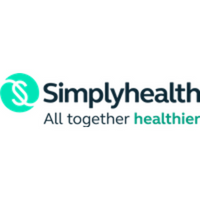How to use your employee benefit data to identify hidden workplace issues

There’s no question that employee benefits are vital to making a business attractive to prospective employees, helping bridge the gap between slow moving salaries and boosting workplace morale and satisfaction.
However, in tougher climates, HR departments are expecting the business advantages of their employee benefits package to go much further.
Developing MI capabilities
In response, employee benefits providers have been developing their management information (MI) capabilities to be able to provide data which shows the added value and increased ROI for their employee benefit.
Numbers on a spreadsheet have been replaced by insightful charts and graphs, making it much easier for HR teams to recognise the impact of MI.
This information can be used to help HR teams work out what’s impacting their workforce on a day-to-day basis, helping to inform their overarching HR strategy or identify hidden problems in the workplace.
Although the content varies based on the type of employee benefit and its supplier, MI typically includes analysis on how a workforce is using the employee benefit. This can include usage by different demographic groups, workplace locations, spikes and dips in benefit engagement over staggered periods of time and/or the value employees get from the benefit.
Utilising MI
MI data can help a business to identify any hotspots within their organisation where improvements or changes are needed. For example, links can be made to show if more needs to be done to increase employee engagement, support staff health and wellbeing, improve the workplace culture or upgrade working environments.
If there is low take-up of an employee benefit in a certain business location, this could suggest that benefit communications or line manager training needs to be increased to encourage better engagement. Or if there is high usage of an employee benefit offering physiotherapy treatments, this could suggest the workforce needs refresher training on safely lifting heavy objects.
Seeing the nature of employee assistance programme helpline calls can help you gain a deeper understanding of what is going on in your organisation, raising awareness of issues that managers may be unaware of. For example, a high number of calls about workplace bullying may be a warning sign, prompting deeper investigation around the issue.
Collating and understanding your employee benefits’ MI data can be a fantastic tool to identify underlying problems in your organisation and any red flags shouldn’t be ignored.
Nipping problems in the bud
At Simplyhealth, we encourage a prevention over cure approach to all aspects of wellbeing. Using your MI to nip potential problems in the bud before they grow will lead to your business having a happier, engaged and more productive workforce for the long term.
To support you with measuring the true ROI of your employee benefits, we’ve created an industry insight, ‘Measuring the return on investment from health benefits’ to help you drill down the detail behind your usage data. Download the guide for free.
This article was provided by Simplyhealth.
Supplied by REBA Associate Member, Simplyhealth
Our health plans make it easy for people to maintain their health&wellbeing.







